Cooke, Troughton & Simms Telescope Elevation (Bearing) No. 14
| Dieses Prismenteleskop - wohl ein 7x50 - mit rechtwinkligem Einblick wurde als Visierfernrohr an Kommandogeräten zur Flugabwehr bzw. Flugbahnbestimmung (Höhe/Deklinationswinkel = elevation) genutzt. Entweder links und rechts am Gerät (s. Foto mit Vorgängermodellen) als Paar oder in Kombination mit einem identischen Modell aber zur horizontalen Abweichung (= bearing). Dementsprechend wurden die Modelle bezeichnet. Für die Britische Army und Navy wurden diese von Cooke, Troughton & Simms hergestellt. Das hier gezeigte Modell "Telescope Elevation" ist mit Modell Nr. 14 Mk3 bezeichnet und hat die O.S. Nummer 1733 G.A. und die Seriennummer (C.T.S.) 556. Das "Telescope Bearing" mit O.S. 1732 (Seriennummer 281) ist im weitern Foto auf einem Stativ abgebildet. | This prism telescope -likely a 7x50 - with a right-angled eyepiece was used as a director sight on a predictor (dirctor) for anti-aircraft defense or flight path determination (elevation). On the left and right on the predictor (cf. photo with the predecessor model) was either in a pair or in combination with an identical model, but determining the horizontal deviation (bearing). Thus the models were marked. They were made by Cooke, Troughton & Simms for the British Army and Navy. The model "Telescope Elevation" shown here is marked "Nr. 14 Mk3" and has the O.S. number 1733 G.A. as well as the serial number (C.T.S.) 556. The "Telescope Bearing" with O.S. number 1732 (serial number 281) is depicted on a tripod in another photo. |
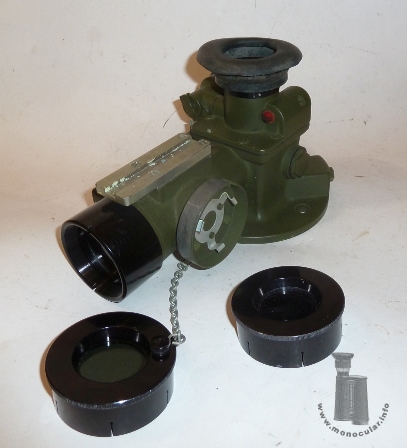
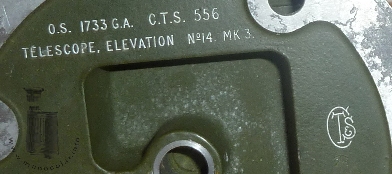

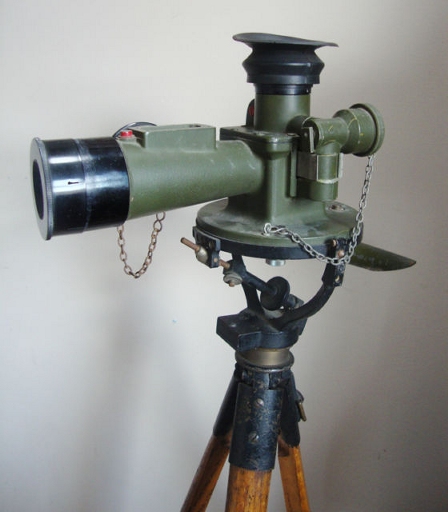
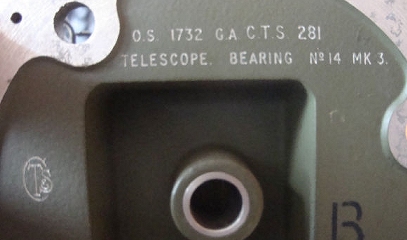
| Das Monokular ist in dem für Britische Militäroptiken typischen oliv- oder waldgrün lackiert. Es hat eine Weichgummiaugenmuschel. Die Fokussierung geschieht mittels eines Drehhebels, der sich ca. einen Viertelkreis drehen lässt und die Dioptrienskala von +3 bis -5 abdeckt. Die Okularlinse ist blau, die Objektivlinse violett vergütet. Das Okular hat ein Fadenkreuz. Die Strichplattenbeleuchtung kann seitlich bzw. wenn das Fernrohr am Gerät montiert ist, oben in eine Klammer gesteckt werden. Es gibt 2 Objektivfilter: grün und hellgrau. Wie die Beleuchtungseinheit ist der eine Filter mit einer Kette am Gehäuse vor Verlust gesichert. Der andere Filter ist am Objektivtubus seitlich aufgesteckt. Eine Metallplatte an der Seite bzw. oben ist mit "CLINOMETER PLANE", also "Flugzeug-Höhenwinkelmesser" beschriftet. Der runde Montagesockel ist mit dem Firmenlogo, den drei Verwobenen Initialen, sowie den oben genannten Angaben gekennzeichnet. Seitlich am Tubus befindet sich noch eine blanke Montageschiene. | The monocular is lacquered in a olive- or forest green typical of British military optics. It has a soft rubber eyecup. Focusing is done by turning a lever covering a quadrant and a dioptre scale of +3 to -5. The ocular lens is coated blue and the objective lens is coated violet. The eyepiece has crosshairs. The reticle illumination is fixed in a clamp on the sie or rather on the top, when the telescope is mounted to the predictor. There are two filter glasses: green and light grey. Like the illumination unit one filter is secured against loss with a small chain on the instrument's body. The second filter is slipped onto a clamp on the side of the tube. A metal plate at the side or top is marked "CLINOMETER PLANE". The round mounting plate is inscribed with the company log, i.e. the three interwoven initials plus the data mentioned above. There is another blank metal mounting rail on the side. |
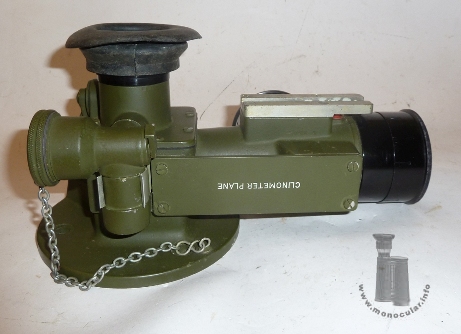
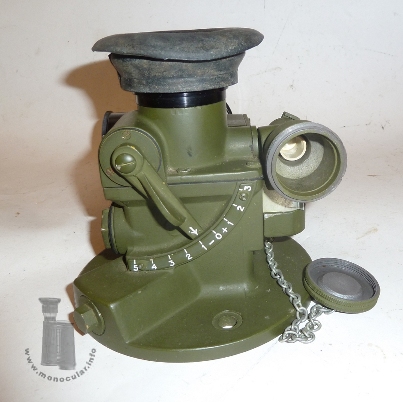
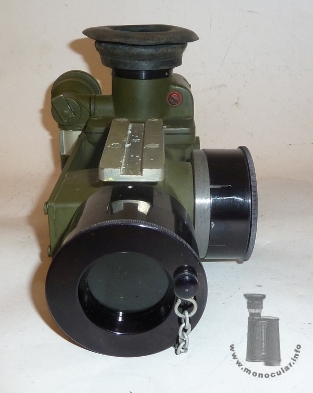
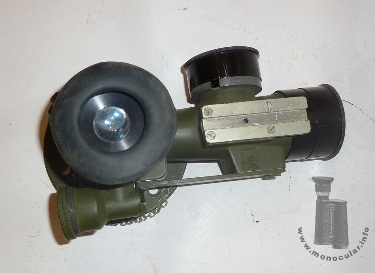
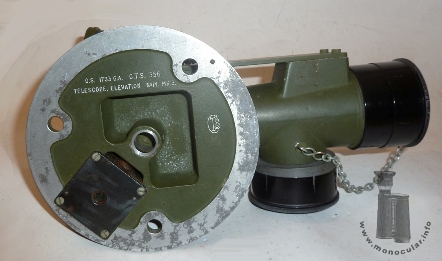
| Das Telescope Elevation ist 23cm, mit Sockelplatte 26cm lang, 9cm b reit bzw. 14cm Durchmesser der Sockelplatte, und 14cm hoch. Der Objektivtubus verbreitert sich von 43mm auf 63mm im Durchmesser. Das Okularstück ist 46mm im Durchmesser. Es wiegt 1,95 kg. | The Telescope Elevation is 23cm, with its mounting plate 26cm long, 9 cm wide or 14cm in diameter of the base plate, and 14cm tall. The objective tube increases from 43mm to 63mm in diameter. The eyepiece is 46mm in diameter. The telescope weighs 1.95 kg. |
Fotos: Zeun; 3: The life of an ATS ‘Ack Ack’ Girl; 4-5: Auktion

